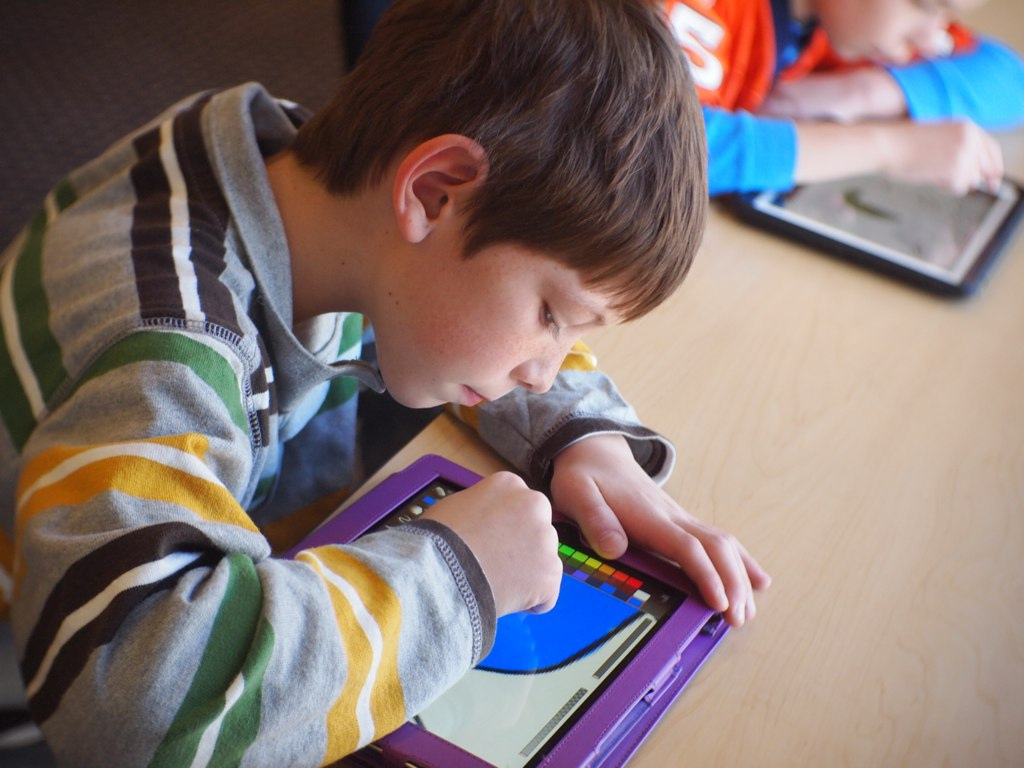A Kentucky school district is increasing student freedoms and performance while zeroing out its dropout rate.
Taylor County School District (TCSD) in Campbellsville, Kentucky has eliminated traditional grade levels, hoping to better challenge and engage students. The district instead tests, observes, and places students at their own pace.
Relying on regularly collected student data, teacher training, technology, and a ten-year plan, the district is revolutionizing what it means to be a public school. For one, students spend their days attending classes virtually or with an instructor but are not assigned to a specific teacher or grade.
Removing Red Tape Spurs Innovation
Since it was named one of four Districts of Innovation in the state, TCSD has the freedom to rethink “cookie cutter” education, said Superintendent Roger Cook. The 2012 law lets districts apply for waivers from regulations they find restricting.
Recruited by the school district to foster a performance-based environment, Cook has worked in the field for nearly a decade. It took time and a team effort though, to pull this off.
The first year of the program was learning how to share and allocate resources between schools and the district’s offices, said Instructional Supervisor Troy Benningfield.
Revolutionizing how students get to a diploma doesn’t mean doing away with standards, Cook said.
Entrance and exit examinations determine a student’s mobility, and a traditional education is still an option, as are project-based and virtual learning. Students must also still meet state graduation requirements.
Teachers earn points for “above-and-beyond” work that transfers to merit pay. And last year families saved over $260,000 in college credit costs, Cook said. Young’s eldest child entered college with several credits, which cost $50 to $60 when completed through the district.
Individualized Learning Plans
Every year students receive Individual Learning Plans. Students with high academic achievement receive even more freedom to tailor their own school days, as long as they meet basic requirements. They could sit through a traditional class one day and work on their own the next.
“We can tailor each individual student’s courses to their interest and career path,” Cook said.
Matti Blakeman is an eighth grader who shuttles between the middle and high school to reach the various teachers and technology she needs to complete her coursework. Blakeman will enter high school with ten credits next year, or practically a full year of high school under her belt.
“It’s just helped me to get a foot in the door to high school so I can go into college with the mindset of [knowing] what I want to do and with college credits,” she said.
Children can join classes that fit their skill level, said kindergarten teacher Michelle Young.
“It’s whatever works best for the child and if parents are willing at that young age, most that are ready to move [up a grade],” she said. “Skill levels are ready for it—socially, too.”
That individualization has resulted in a zero dropout rate, Cook said.
When one young man, the son of a mechanic, wanted to drop out of high school to work on cars, Cook enforced his no dropout policy and met with the student and his parents. They created a new school day for him. Cook allowed him to work on cars and pulled on educators to create math and history lessons related to his interests.
“We try to challenge them at the level they can handle and that’s how we have no dropouts,” Cook said.
Embedded Technology
Every Friday Taylor County students go home at 1 p.m., two hours early, to set school staff free for reviewing student data and professional development. Kids whose parents can’t care for them then stay at school and work online or with peer tutors.
Without technology, TCSD wouldn’t work. Videos of lessons, virtual classes, and a one-to-one iPad to student ratio provide students classes from beyond the district or that don’t otherwise fit into their learning plan. Online classes also help students who are behind catch up.
Test scores and graduation rates have become increasingly important to federal lawmakers, resulting in students receiving credits much quicker online then in a traditional setting, said Anthony Cody, a former teacher and now instruction coach.
Retaining Human Interaction
“You can provide all these different pathways for students to go through but if you’re only gauge of their effectiveness is a multiple-choice test then for me you’re losing a lot of the value that a real rich high school education provides,” Cody said. “If I’m choosing a school for my kid, my son, I want a school where there’s real demonstration of accomplishment—being challenged not just to pass a test but to think critically, develop writing schools, develop relationships with teachers to do that.”
Students can choose a completely virtual education at TCSD, but that doesn’t exclude them from human interaction: four to five teachers are always present in the school’s virtual lab.
“We do have a few students who spend the majority of their day in our virtual lab but we don’t have a lot of [such] students,” said Laura Raganas, a TCSD Technology Integration Specialist at TCSD.
Although students move between schools throughout the day, common eating areas help them also spend time together.
Cook said he didn’t have to sell parents on reorganizing the district.
“What parent or community wouldn’t want their kids to accelerate? I didn’t ask. I gave them alternatives,” he said.
Image by Brad Flickinger.




